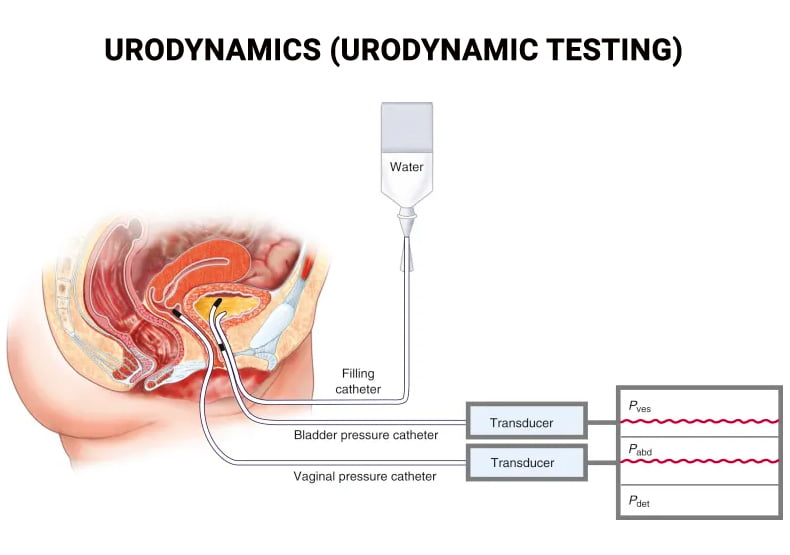The doctors at Century Medical and Dental Center have many diagnostic testing techniques at their fingertips. That’s due to the practice encompassing a multi-disciplinary staff of specialists. Nearly every branch of medicine is represented. Urodynamics is one example of the state-of-the-art diagnostic tools available. A completely safe procedure, it measures your bladder’s functioning to look for abnormalities. Call today to meet with a urinary expert.

Urodynamics specialists at Century Medical and Dental Center provide comprehensive diagnostic evaluations and treatments for bladder and urinary disorders. We accept most major insurance plans, including Medicare, Medicaid, HIP, EmblemHealth, GHI, MetroPlus, and Fidelis. Our state-of-the-art facilities are conveniently located in Brooklyn, Manhattan, and Bronx. Trust our experienced team for personalized and effective care tailored to your urological health needs.
Urodynamics is a set of diagnostic medical tests that checks your lower urinary tract functions. Your bladder, sphincters and urethra are measured to see how much urine you can hold and what happens when you relieve yourself. The tests also look closely at your bladder functions to see if you have any problems like blockages or leaks.
Both men and women can get the bladder pressure test. Your doctor from Century Medical and Dental Center in NYC recommends urodynamic testing along with other diagnostic tests, such as:
Urodynamic testing is used for diagnostics: to confirm a diagnosis or rule out a condition. Most often, you take this test when you’re suffering from urinary incontinence. Some of the other medical conditions that require the bladder test for diagnostic purposes include:
Several tests come under the umbrella of urodynamics. Your doctor in Brooklyn chooses the most appropriate test according to your symptoms and medical diagnosis. The test lasts about 15 to 30 minutes. The types of urodynamic testing available to you include:
“Friendly doctors and staff! Office was clean and comfortable. Doctor was caring and knowledgeable, taking time to really listen to me and answer all my questions.” - Katie Thigpen
200 Livingston Str,
Brooklyn, NY 11201
908 reviews
770 Flatbush Ave
Brooklyn, NY 11226
234 reviews
827 11th Ave
Manhattan, NY 10019
88 reviews
260 Ave X
Brooklyn, NY 11223
261 reviews
180 Myrtle Ave
Brooklyn, NY 11201
90 reviews
2315 3rd Ave
New York, NY 10035
40 reviews
There isn’t any special preparation to do before the bladder pressure test. You might get instructions to arrive with a full bladder if the test requires it. Certain medications can interfere with the testing, so inform your doctor beforehand of all the medicine and supplements you’re taking. Include all your pills for diabetes, asthma, chest pain, hypertension, high cholesterol and especially any kidney problems.
On your testing day, you’re asked to relieve your full bladder in a special toilet. The toilet measures things like the rate of urine flow and how much urine you produce. Then you lie down while two catheters are introduced into your bladder — one to fill the bladder and the other to check the pressure changes. These are connected to a machine that records all the findings.
For the first couple of hours after the procedure, you may feel mild discomfort every time you relieve yourself. You may even notice some blood in your urine, but that’s normal and caused by the catheter. You need to drink at least eight ounces of water every half hour as this helps reduce the pain and discomfort. Your doctor may also suggest a warm bath or heated pad.
You’re provided over-the-counter or prescription medicine to ease your discomfort and prevent an infection. You may want to relax for the rest of the day, but there are no lasting side effects or consequences from urodynamic testing. When you’re worried about leakage, constant urges to urinate, a urinary tract infection or some other urinary problem, contact your MDs at Century Medical and Dental Center for an appointment.
Century Medical and Dental Center is an accredited healthcare facility in NY that operates in accordance with Article 28, a public health law. This law regulates and recognizes accreditation for public healthcare facilities, ensuring they are licensed and operated correctly. By undergoing the Article 28 process and achieving accreditation, Century Medical and Dental Center demonstrates its commitment to meeting the highest standards of care.
As a multidisciplinary medical center, we have highly qualified doctors, nurses, and support staff who are working hard to provide the best medical care to patients in Manhattan, NY, Brooklyn, NY, and Bronx, NY including Brooklyn Heights, Dumbo, Prospect Heights, Park Slope, Clinton Hill, Boerum Hill, Red Hook, Harlem, Gravesneck, Flatbush, and Bedford-Stuyvesant.